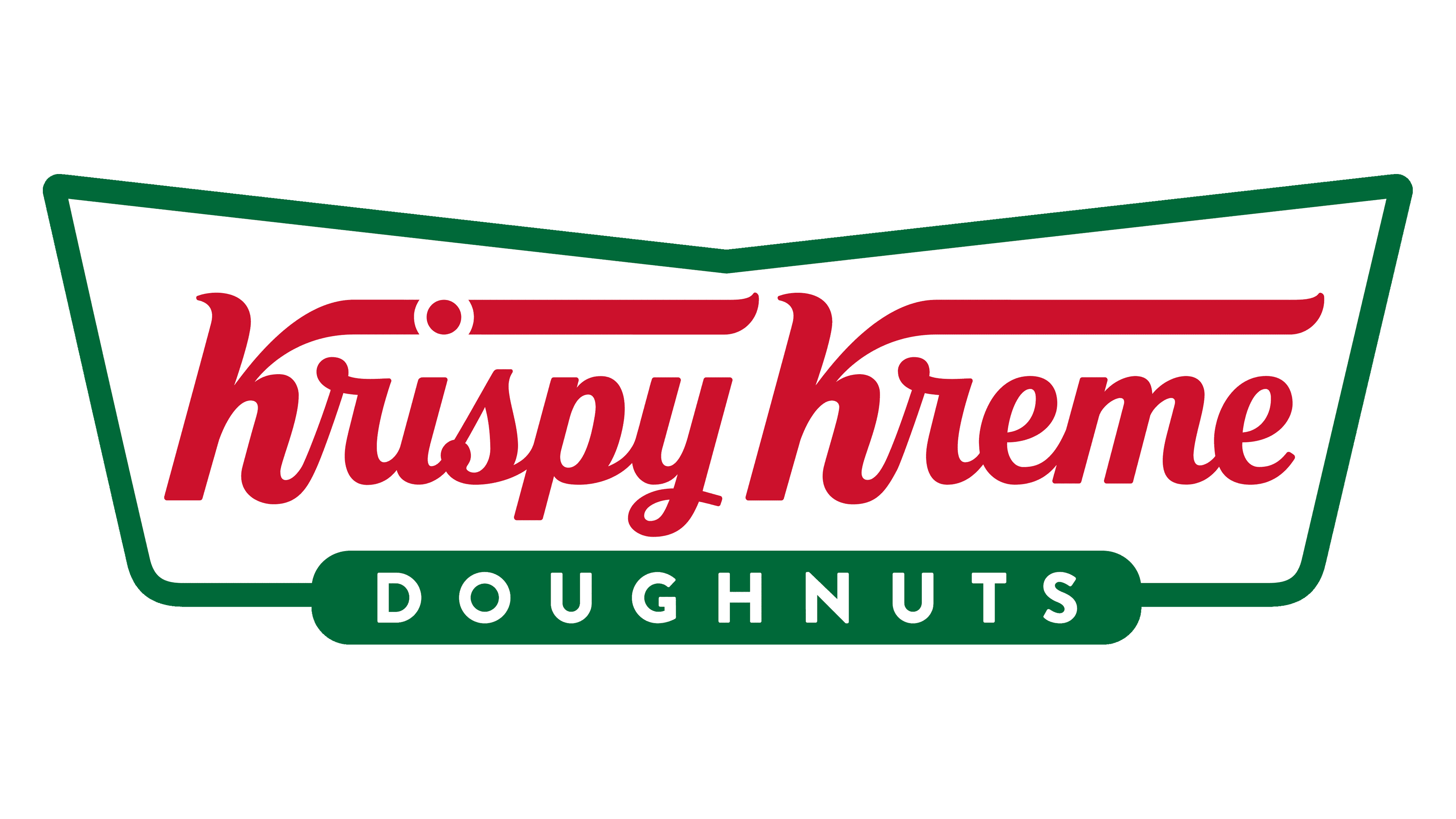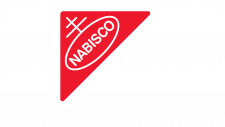Krispy Kreme Logo
Krispy Kreme, a renowned doughnut company, specializes in creating a wide variety of sweet treats. Presently, its primary focus remains on doughnuts, complemented by beverages. Krispy Kreme has a global presence, with significant markets in the Americas, Europe, Asia, and Australia. The company operates both through franchise and company-owned outlets. Krispy Kreme is a publicly traded company, with diverse shareholders and no single majority owner. Its business strategy includes expanding its reach through new store openings and digital sales platforms, catering to a growing customer base worldwide.
Meaning and history

Krispy Kreme, renowned for its delectable doughnuts, began in 1937 in Winston-Salem, North Carolina. Vernon Rudolph, the founder, obtained a secret recipe from a New Orleans chef, initially selling these treats to local grocery stores. The distinct taste quickly garnered a following, leading to the establishment of Krispy Kreme’s first direct-sale store.
Throughout the mid-20th century, the company flourished in the Southeast U.S., gaining a reputation for its signature hot, glazed doughnuts. The company’s focus during this era was on preserving the quality of its products while slowly expanding its geographical footprint.
The 1970s marked a diversification era for Krispy Kreme, introducing new flavors and items, yet upholding its classic recipe and preparation methods. Its regional presence continued to strengthen during this period.
The 1990s ushered in a transformative era for Krispy Kreme. The company’s initial public offering in 2000 catalyzed a nationwide and later global expansion. The brand’s popularity soared, with stores often seeing lengthy lines of eager customers.
However, the rapid expansion led to operational challenges in the mid-2000s, resulting in financial setbacks and store closures. This phase necessitated a reevaluation and restructuring of Krispy Kreme’s business approach.
In 2016, a significant ownership change occurred when JAB Holding Company acquired Krispy Kreme, transitioning it back to a private entity. This new chapter focused on global expansion, modernizing facilities, and enhancing digital and online sales platforms.
Krispy Kreme returned to the stock market in 2021, signaling a phase of renewed growth and stability. Currently, the company is actively expanding its global presence, innovating while maintaining its commitment to the original doughnut recipe that started it all.
Krispy Kreme’s journey from a local store to a global brand showcases its resilience and ability to adapt, all while staying true to the taste that has made it a household name in the doughnut industry.
What is Krispy Kreme?
Krispy Kreme is a globally recognized doughnut and coffeehouse chain, renowned for its signature Original Glazed® doughnut. Established in 1937, the company has grown into an international brand, celebrated for its wide array of delicious, freshly made doughnuts and beverages. Krispy Kreme’s iconic status is rooted in its commitment to quality and its unique, sweet offerings that continue to delight customers worldwide.
1937 – 1978
The logo presents a distinctive, vintage-style red and white color scheme. At the top, a red oval encases two stylized characters, both wearing crowns and holding circular objects, representing doughnuts, alongside the initials “KK”. Below, the brand name “Krispy Kreme” is scripted in bold, flowing red letters that convey a sense of warmth and familiarity. The font is reminiscent of mid-20th-century design, with its substantial letterforms and slightly angled alignment, which adds a dynamic feel. The overall effect of the logo is one of classic charm, suggesting a rich heritage and an enduring commitment to quality, resonant with the brand’s long-standing history.
1978 – 1991
This iteration of the Krispy Kreme logo represents a modernized shift from its predecessor. The red hue remains vibrant, yet the design has been streamlined for a contemporary appeal. The oval has transformed into a emblem, enclosing the initials “KK” in bold, white, sans-serif type, conveying a cleaner, more minimalist aesthetic. Below, the “Krispy Kreme” text is now on a red banner with a gentle wave, giving a subtle nod to motion and progress. The font is less ornate, opting for a straightforward, sans-serif style that aligns with modern branding trends. This logo simplifies the visual elements, focusing on clarity and recognition, a reflection of the brand’s evolution and its aim for broader, modern market appeal.
1991 – 2017
This logo presents a fresh evolution from its predecessors, introducing a new color and textual element. The red script for “Krispy Kreme” remains, retaining the brand’s signature color, but it now rests within a green-bordered, bowtie-shaped banner, a departure from the previous wave design. The addition of “DOUGHNUTS” in bold, capitalized, sans-serif font anchors the logo, providing a clear declaration of the company’s primary offering. This textual addition is set against a green background, which brings a new visual dimension to the logo and offers a complementary contrast to the red. The overall design merges the traditional script font with modern design elements, symbolizing a bridge between the company’s heritage and its contemporary brand identity.
2017 – Today
In this version of the Krispy Kreme logo, there is a notable shift towards a more streamlined and cohesive design. The vibrant red of the “Krispy Kreme” script remains central, but it now features a more pronounced curvature, enhancing readability and brand recall. The green bowtie-shaped banner enveloping the text has been refined with rounded edges, giving it a sleeker, more modern appearance. The word “DOUGHNUTS” below has been resized and repositioned to sit more harmoniously within the green banner. This adjustment in the text size and the banner’s proportions creates a balanced visual hierarchy, emphasizing the brand name while clearly stating the company’s specialty. Overall, this logo evolution speaks to a modernization of the brand’s image, emphasizing simplicity and brand clarity while honoring its heritage through consistent use of color and font style.














